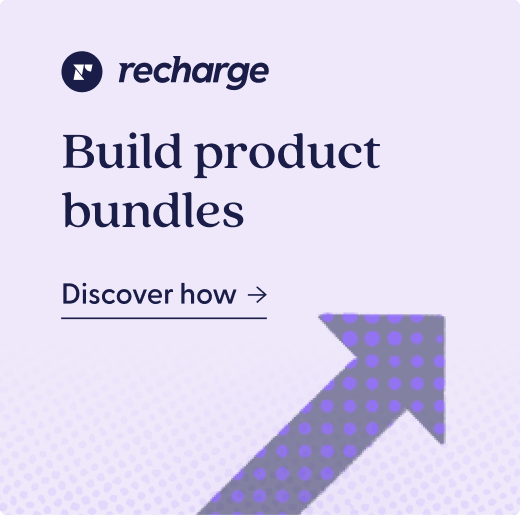Our work with best-in-class DTC brands and agency partners has given us the chance to analyze thousands of ecommerce websites. We've developed this list to help you understand which features will help your ecommerce business grow the most, and how to put them into action.
Why the right ecommerce website features are so important
Building and optimizing your ecommerce website is one of the most important investments you can make for your online store. To convert more customers, retain them for longer, and increase average order value (AOV) and customer lifetime value (LTV), you’ll need a website that’s easy to navigate and puts crucial information at shoppers’ fingertips, while driving them to purchase your products.
Optimizing the customer experience on your website with the proper features will lead to better success for your business, and solve common problems you’re already facing, such as how to:
- Acquire subscribers
- Increase AOV
- Decrease churn
- Retain customers for longer
- Increase LTV
- Appeal to search engines
- Open up channels for recurring revenue
- And grow your business
There’s never been a better time to optimize your site. Retail ecommerce sales amounted to approximately $5.2 trillion worldwide in 2021—a figure that is forecasted to grow by 56% over the next few years, reaching about $8.1 trillion by 2026. Continue reading for our list of the best ecommerce website features to implement today.
28 features to optimize your ecommerce site
1. Subscription purchase options
For one of the best website features to increase retention and LTV—and guarantee recurring revenue for your online store—consider implementing a subscription option on your site. With subscriptions, you can make it easier for customers who are interested in making repeat purchases with your store, leading to better customer loyalty and reduced churn.
In 2022, online stores offering subscriptions increased their LTV by 12% across all verticals.
Showcase subscription options on your site with elements like a dedicated subscription landing page and clear subscription options on product pages, so customers can see how much they can save by subscribing.

2. Customer portal
The customer portal is the place where customers can manage their orders and make any edits they need, without bothering your Customer Support team. It’s also a great place for you to include their order history, rewards points, and cross-sell and upsell options. With a customer portal, customers can interact with your brand, leading to better customer engagement and increased retention potential.
Ecommerce stores can optimize their customer portal to make it a hub for their shoppers—offering clear communication and making the customer journey as smooth as possible. At a minimum, customers should be able to do the following actions within their portal:
- Edit an order
- Skip a shipment
- Adjust the frequency of a subscription
- Check their loyalty status
- Update their billing information or address
- Set up mobile and email alerts
- Add items to their next shipment
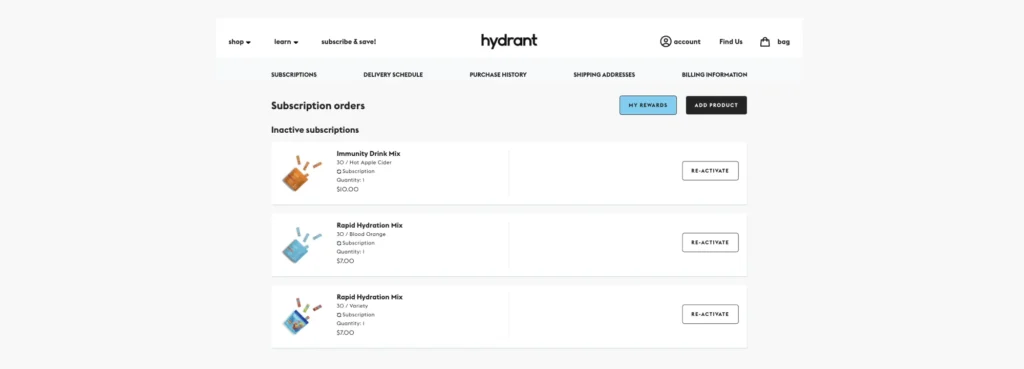
3. Cross-sell & upsell
One key way to increase AOV and boost recurring revenue for your ecommerce brand is by cross-selling and upselling.
Cross-selling involves showing customers products that could add value to what they’re already purchasing, while upselling is convincing customers to buy a higher-value product—typically a more expensive version of what they already have in their cart or have purchased in the past.
Consider showing cross-sell and upsell options in a variety of places in your online ecommerce store—on the product page, the checkout page, and even within the customer portal. By customizing the shopping journey for your customers this way, they’ll be more inclined to make additional or more expensive purchases with your store.

4. Bundles
Much like cross-sell and upsell options, offering bundles can nudge customers to spend more money with your brand. By allowing customers to build their own subscription box that is sold as a single item, or curating these product assortments for them, you can make shopping easier for your customers while increasing revenue.
Consider offering product bundles that are available as both one-time purchases and subscription options. This gives customers the flexibility to choose how they want to shop with your store. You can also further increase customization by allowing customers to update the contents of their bundle after they check out.

5. Collections
Similar to product bundles, collections add value through curation and offer a sense of ease for potential customers shopping on your ecommerce site. These product assortments can be used to make your site easier to navigate and help customers find what they’re looking for more quickly.
For example, if you offer skincare products, you can group products by skin types—such as products for oily skin, products for skin prone to breakouts, and products for dry skin. This will help customers narrow down their choices and lead them to the products online that they’re most interested in.
Another common type of collection is products frequently purchased together. Brands can also further personalize the shopping experience by creating collections of “other products you may enjoy,” targeting items for that specific customer as a cross-sell potential.

6. Multiple payment options
Offering multiple payment methods is a great ecommerce website feature for those looking to increase their conversion rate, and one that customers now expect from all online stores. They want ultimate flexibility when it comes to paying for their products from online retailers.
Offering different ways to pay gives shoppers all the options they’re looking for when it comes to making a purchase with your business. Note that your process for implementing this on Recharge depends on whether you use the Shopify Checkout Integration or another checkout platform.
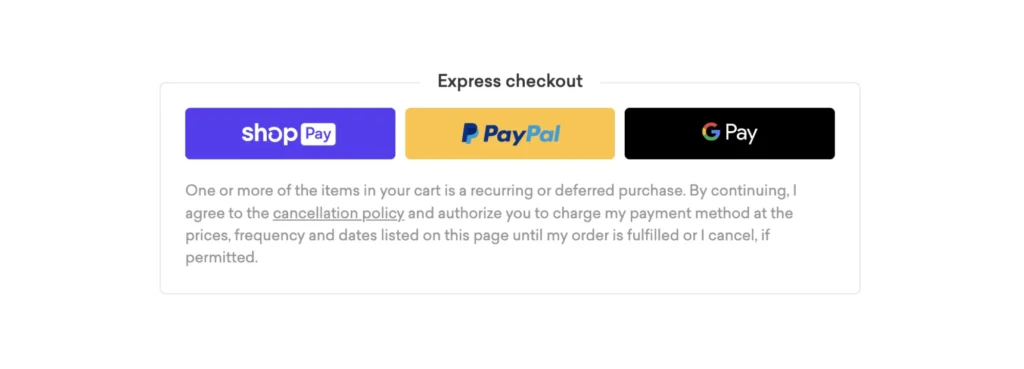
7. Secure checkout
If there’s any website feature your business has to—without a doubt—invest in, it’s a secure checkout process. No matter what business type you run or which products you sell, customers have to know their personal information is safe and secure.
With multiple payment options, customers are trusting that their credit card information and personal data are safe with your store. Include your secure checkout guidelines in frequently asked questions (FAQs) and throughout the checkout process so customers feel safe making their payments.

8. Passwordless login
Are you frequently overwhelmed by the number of passwords you have to keep track of? Chances are, your shoppers are too—making passwordless login a critical component of ecommerce platforms, specifically for customers to check their order status and other details within the customer portal.
With passwordless login, you can greatly reduce churn by allowing customers to log in to manage their orders with a 4-digit authentication code via SMS or email. This takes away the stress and hassle of having to remember a password to sign in to their account, making it one of the key features of ecommerce sites today.

9. Free loyalty program
As customer acquisition costs (CAC) continue to rise and brands look to increase retention and decrease churn, there’s no better time to implement an unpaid loyalty program as you examine which top ecommerce features you have on your site. Rewards programs can create stronger brand loyalty and encourage shoppers to continue making purchases with your business.
45% of subscription customers have said they’re more likely to keep their subscription for a year if there are rewards and perks associated with it.
Make sure new customers can learn about your free loyalty program (and be convinced to sign up) by offering ample information about it on a dedicated landing page. You can also make it hassle-free for shoppers to sign up as they check out, enticing them with points or promo codes they can use on their next purchase.
If you’re not sure where to begin, consider integrating LoyaltyLion to help you create a successful rewards program.

10. User-friendly navigation
The faster and easier your potential customers can navigate your site, the better. Website design and user experience are a huge priority for brands looking to improve their website features.
Create navigation for your online ecommerce store that’s straightforward to use, making products easy to search and find. Organizing your items into product categories can be a huge help to shoppers, as can offering bundling, cross-selling, and upselling options.

11. Search bar
Ensuring your search bar is visible and easy to find will make your website even more user-friendly overall. You might even consider making the search bar sticky so that it remains on the page no matter how far down a customer scrolls. Ecommerce brands should also ensure the search bar is visible and usable on mobile devices.
Helping customers find what they are looking for is an essential component of any website in the ecommerce industry. Optimize your search bar to ensure results are accurate. If you’re not finding the search results you (or your customers) desire, then consider re-tagging the products on your site to achieve better results.

12. Clear product organization & hierarchy
Products should be clearly organized and shown on your site, so customers can find them easily. Start from the top navigation—are your products organized in categories that will make sense to shoppers? Ensure the thought process is clear and straightforward so that every customer, no matter how well they know your brand, can find what they’re looking for.
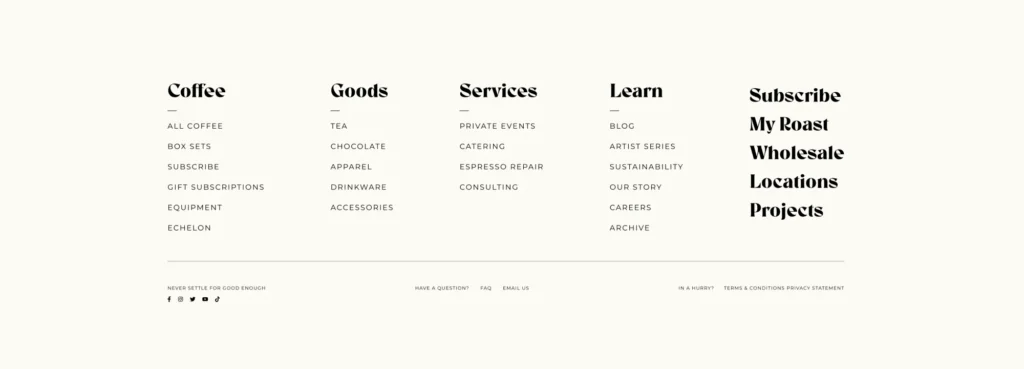
13. Useful product information
The information on your product pages will depend on your vertical and the type of products you sell, but it’s usually better to include more information than less. Depending on the products, you might need to include:
- Dimensions
- Weight
- Color
- Material
- Size
- Any assembly materials included
- Care instructions, if applicable
Most customers have questions while shopping—and if you can answer them all on the product page with thorough product descriptions, you’ll have more conversions and fewer customer questions coming in. With the product information, you should also include:
- High-quality photos
- Product videos, if applicable
- Shipping information
- Subscription options
- Customer reviews or testimonials
Having great product pages can also make your site more appealing to popular search engines, leading to better organic traffic.

14. High-quality product photos
Product pages should also include high-quality product images that clearly display the item, so the customer can see exactly what they’re purchasing. For most products, it’s best to have 3-5 photos, so shoppers can see the item from all angles.
Product photos are an extension of your brand, so make sure the photography style, colors, and lighting all stay consistent with your style guidelines, especially if you plan to share high-quality images on social media and other places in addition to your website. Try A/B testing to see which photo style customers gravitate towards and further optimize your ecommerce site.
Brands can also play around with placing their product against different backdrops, whether in its natural habitat (like toothpaste in the bathroom) or somewhere totally out of context to make shoppers even more curious about your product (like skincare products out in nature).

15. Product videos
In some cases, product videos can be a huge help in making sales. Showing your product moving or in use can lead to better customer trust and convince shoppers to make the purchase, especially for products they’d like to see in “real life” before buying. Some examples of products that lend themselves well to videos include:
- Clothing
- Kitchen appliances
- Beauty products
- Pet accessories
- Furniture
Make sure your product videos are high quality and showcase the important aspects of your product in an eye-catching and unique way. You might also consider using the video in different ways—like on your homepage or as a banner on other website pages.

16. Customer reviews
Many ecommerce websites are choosing to place customer reviews on product pages as further proof that a shopper should make the purchase. In other words, don’t make customers dig around to find an obscure page buried on your website with reviews. Instead, showcase customer testimonials and utilize them as social proof to sway shoppers into choosing your product.
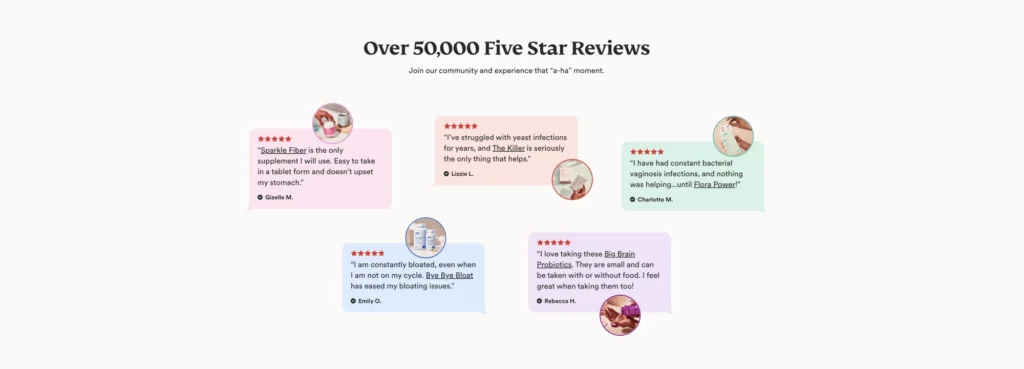
17. Easy navigation to Customer Support
Place a link to Customer Support in your top navigation bar as well as your footer and any other helpful pages—even product pages. Without this easy navigation to connect with support, your customers will feel helpless if they run into a problem on your site or have a question that isn’t answered on your FAQ page.
Customer Support can come in a variety of ways. Many ecommerce sites now offer Customer Support chats directly on the website that are easy to find and use. They may help customers clear up some issues, but most likely can’t handle everything, which is why it’s important to make support accessible by email, telephone, and even social media.
To ensure you do have quick support, consider integrating a solution like Gorgias. They can manage all your customer service in one place, including email, chat, and social media. Shoppers will be at ease and have more confidence in your brand knowing you have such responsive support.

18. Help Center
Another ecommerce website feature that can support your customers and could even help you cut down on support tickets for your online store is a Help Center—a dedicated webpage that shoppers can visit to find answers to their questions. It functions as a self-serve customer service option, so shoppers don’t have to engage your Customer Support team every time they have a question or concern while shopping.
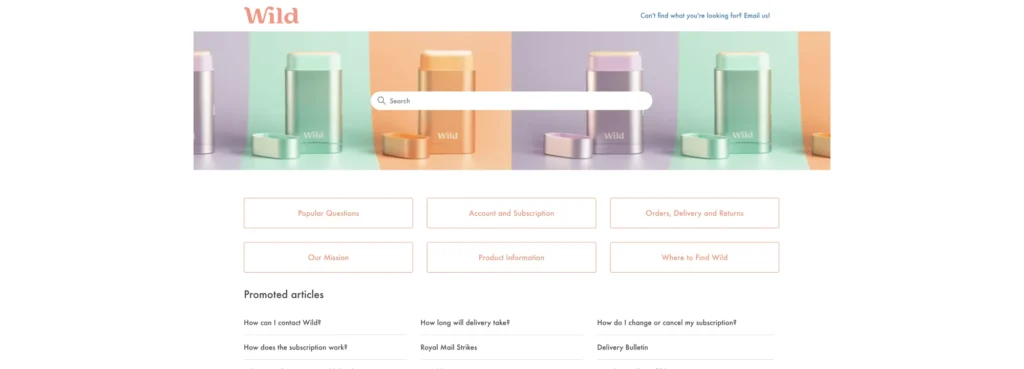
19. Chat software
As mentioned, offering chat support has become the status quo for any business looking to convert shoppers on their website. Having a live chat available can help customers feel supported while they’re shopping on your site, and can help answer common questions shoppers might have.
Make sure your chat support is mobile-friendly, too, so that customers can reach it from wherever they’re shopping. And to go beyond just support, consider implementing chat software that can even help customers find the right products, just like an in-person sales associate would.

20. Multilingual support
With the globalization of our world, people are sharing information across platforms like social media at lightning speed—crossing borders, cultures, and languages. Ecommerce brands can take advantage of this by reaching new markets and making more sales in areas of the world they weren’t previously invested in. In fact, 57% of online shoppers already report that they shop internationally.
For online ecommerce stores that offer to ship in multiple countries, multilingual support is a must-have feature. If shoppers can’t reach you or communicate with your brand in their native language, you could miss out on potential sales and complicate shoppers’ ecommerce experience.
Furthermore, brands should consider dynamically populating appropriate currencies based on the shopper’s IP address. This ensures they see prices in their native currency, and don’t have to bother with calculating conversion rates.

21. Simple return & exchange process
Much like your Help Center and Customer Support, offering clear return and exchange policies is a crucial part of your ecommerce website and a smooth customer experience. Shoppers want to know upfront how they can return an item, before they even make a purchase.
If they choose to return a product, making it easy for them can help you retain customers in the future. Anger a customer by making them jump through hoops just to make a return and they probably won’t come back for another purchase.

22. Email opt-in
Another great ecommerce website feature—which you’ve probably experienced any time you’ve tried to shop online lately—is an email opt-in. With an email opt-in, if a shopper comes to your site but doesn’t make a purchase, you now have their contact information. This gives you a huge advantage because you can send them emails and other marketing materials that could lead to a future sale.
Make your email opt-in as effective as possible by performing A/B testing to see which language works best with your shoppers. Consider extra incentives, too, like a welcome discount for those who choose to sign up.
Brands are also expanding their reach by placing email pop-ups on other pages besides just the homepage. If a shopper exits out of the pop-up without subscribing to emails, you can try again later and see if they changed their mind about signing up.
If your ecommerce business needs help with email communications, implement Klaviyo to easily send automated emails to shoppers and keep your customer data up to date.
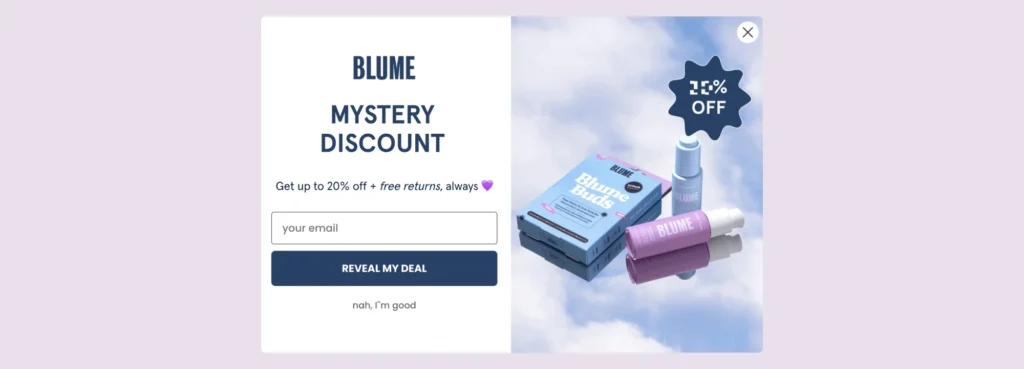
23. Integration with social media platforms
Build brand awareness and trust by connecting your social media platforms to your ecommerce site. In today’s world, integrating your social profiles is non-negotiable in terms of top ecommerce website features.
Many customers like to peruse a brand’s social media before making a purchase, especially Gen Z shoppers. Whether they’re looking for more specific information about a product or want to see how other customers have used an item, ensure your social channels, like Instagram and YouTube, are up-to-date and full of relevant information your customers will find helpful.

24. Footer navigation
The footer is an undervalued part of a lot of ecommerce websites—though it can be a really great website feature for driving sales. It’s also crucial for brands to include legally-required information there, as it shows up on every page. Brands should have, as a baseline, their sitemap, logo, contact information, and social media icons.
Depending on what industry you’re in, you’ll want to include copyright information, legal disclaimers, terms and conditions, and privacy policies. Brands can also make the footer navigation user-friendly by including links to:
- Popular products or bundles
- FAQ pages
- Customer Support
- Testimonials
- Shipping and return policies
- Email sign-up form
A lot of ecommerce website features exist to make online shopping easier for your customers, including the footer navigation. Ecommerce website design should include a helpful and expansive footer to create a smooth user experience.
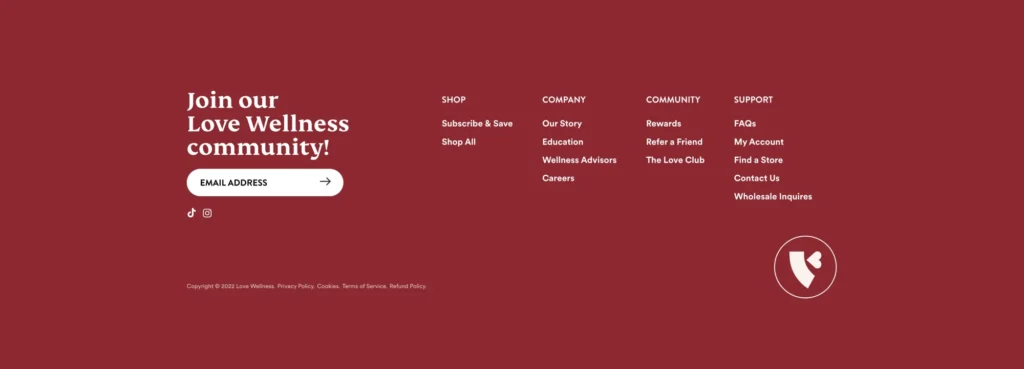
25. Product FAQs
Frequently asked questions can help you earn your customers' trust and address any concerns they might have. These questions could be stopping them from making a purchase, which is why many ecommerce brands opt to put some product FAQs on the specific product page.
Frequently asked questions that are specific to the product could be:
- What are the shipping options?
- How do I know the correct size?
- What is the return policy?
- Is there a warranty for the product?
Answering these customer questions could be the difference between a customer converting, or turning to one of your competitors.

26. Store FAQs
Online customers shouldn’t have a disadvantage when it comes to the shopping experience and learning more about your brand. To ensure all their questions are answered, include a store FAQ somewhere on your website.
Whether it’s on the same page as your brand story, history, and mission, or included in the Help Center, you’ll be able to predict customer questions and answer them in a straightforward fashion with a store FAQ.
With increasing competition among online retailers, a store FAQ will help you stand apart and create better brand awareness, giving shoppers more information about your store and what you do. Some ideas of what to include in your store FAQ are:
- Where your products are manufactured
- Exchange and return policies
- What measures your store takes to protect customer privacy
- Different payment methods and your payment process
- Shipping carriers and rates

27. Order tracking
Being able to track an order is the status quo now, especially as major retailers offer faster shipping options like next-day or two-day delivery. 22% of shoppers say they’ll drop out of an online shopping session because shipping is too slow.
Your ecommerce business should put fast shipping at the top of its priority list—then offer detailed order tracking for your customers. This could include sending updates to your customers as the order is processed, shipped, and arrives at their door.

28. Product quiz
Introducing a product quiz with a responsive design is a fun way to engage customers and help them find the right products on your website. Include the product quiz or questionnaire in your website navigation (or even on your homepage) to make it easy to find.
Some businesses also use the product quiz as a place to capture customer email addresses for future communication opportunities with potential customers. You might even consider making promotional offers a part of the quiz—enticing customers even further to make a purchase with your brand.

Retain & attract more customers with these top features
With these top 28 ecommerce website features, you can ensure your online business is successful. From user-friendly navigation to secure checkouts to loyalty programs, creating the best customer experience is possible with the right features.
Need help implementing these features with your ecommerce business?
For more information about how you can implement these top ecommerce website features, reach out to the team at Recharge today or one of our best-in-class agency partners. You can also check out our features page for a thorough list of Recharge website and product features that are essential to subscription success.


